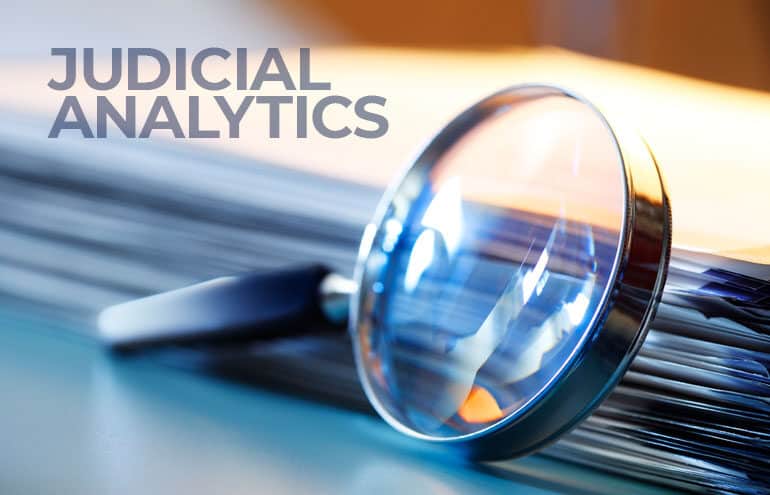By closely following the details of Bruce’s Beach, we can begin to unravel the strategic importance of judicial research and analytics for civil litigation at the state trial court level.
There’s a narrow strip of land nestled in the South Bay of Los Angeles. The three-acre parcel overlooks the Pacific Ocean, sitting as the last remaining remnant of Bruce’s Lodge, the first African American beach resort on the West Coast. Bruce’s Lodge was built by Charles and Willa Bruce in 1912. It was the only beachfront destination in Los Angeles County where non-White members of the community could relax and unwind. That is, until 1924, when the City of Manhattan Beach seized the property and closed the resort, utilizing the power of eminent domain with plans to redevelop the land into a public park.
Now, fast-forward to 2021. The City of Manhattan Beach History Advisory Board uncovered official correspondence indicating that the initial plan to close the resort was racially motivated, stemming from “a desire to drive out a successful Black business and its patrons.” In response to this discovery, the Los Angeles County Board of Supervisors voted unanimously to return the land to the Bruce family. The legal heirs of Charles and Willa Bruce were all set to receive the deed to Bruce’s Beach. But then, on October 19, 2021, Joseph Ryan, an attorney from Palos Verdes Estates, filed a complaint against the Los Angeles County Board of Supervisors, arguing that the transfer of Bruce’s Beach to the Bruce family is an unconstitutional “gift” under Section 6 of Article 16 of the California Constitution.
A Case Study in Judicial Analytics
This case is instructive. By following its details closely, we can begin to unravel the strategic importance of judicial analytics for civil litigation at the state trial court level. Ryan’s argument against the transfer of Bruce’s Beach hinged on a narrow definition of a gift of public funds, which states that “an appropriation of money by the legislature for the relief of one who has no legal claim therefore must be regarded as a gift.” But how have the judges at the state trial court level defined a gift? How has this definition actually been worked out in practice?
Judicial analytics platforms offer a way to answer these questions. Trellis, for example, uses artificial intelligence to mine state court records, aggregating data in ways that allow users to “Google” search through court documents held across multiple counties and multiple states. Attorneys are analyzing this data qualitatively, scouring the complaints, memorandum, and tentative rulings filed with the courts, collecting examples of the types of arguments that resonate with particular judges. With judicial analytics, an attorney no longer needs to wait for a relevant case to come across their path. They can find it themselves through a targeted search, one that points directly to the paragraph — to the sentence— that addresses the pertinent legal threshold, the key factor(s) influencing a specific judge’s decision-making process. (Full disclosure, Trellis is my company.)
A targeted search with the phrase “gifts of public funds” uncovers dozens of recently published tentative rulings that have addressed this topic across the State of California. Browsing through these rulings, we learn that state trial court judges readily affirm Section 6 of Article 16 of the California Constitution, which states that the California Legislature does not have the power to make any gift of public money to an individual. However, each ruling notes the same exception to this prohibition: any appropriation of public funds that fulfills a public purpose is not a gift of public funds, even if private individuals benefit from it.
With this information, we quickly get an idea of how we would need to structure an argument in the case against the Los Angeles County Board of Supervisors. We would need to emphasize the possible public purposes associated with the transfer of land to the Bruce family, highlighting the extent to which the transfer is (or is not) part and parcel of the county’s Anti-Racist Policy Agenda.
Words to Numbers
Judges produce a rich stream of information every single day. This information, which might take the form of a docket entry or a tentative ruling, is now being systematically collected and analyzed, all with the goal to generate insights into how judges make their legal decisions and what arguments they find persuasive. Judicial analytics platforms are uncovering innovative ways to visualize these judicial tendencies, quickly communicating a tremendous amount of information in easily digestible charts, graphs, and percentages. This is where things get really interesting.
It all starts with a judge dashboard.
This is the place where attorneys can study their judge’s caseload, with diagrams indicating the number of cases they have active and the average duration of those cases. These figures, culled from thousands of data points from court dockets, enable us to get a sense for how fast cases move through a particular judge’s docket. We know, for example, that in Los Angeles County, the average case length is 510 days. Knowing where my judge sits in relation to this average (as well as the number of cases [s]he has on deck) can help us anticipate the likely pace of a case.
But that’s just the beginning. Judicial analytics can also provide information about grant rates for different types of motions. Consider, as an example, the Hon. Mitchell L. Beckloff, the judge assigned to the Bruce’s Beach case. In a quick glance, I can see that Beckloff tends to rule in favor of plaintiffs in bench trials, siding with the defendant in only 43% of his cases. This compares interestingly with the other two judges in the Writs and Receivers Department of the Los Angeles County Superior Court, with the Hon. Mary H. Strobel and the Hon. James C. Chalfant ruling in favor of the defendant in 75% and 46% of their bench trials respectively.
If we look at things at a more granular level, we learn that Beckloff and Chalfant both grant demurrers at a rate on par with the county average (42%), favoring those filed by the defendant at a rate of 83%. Strobel, on the other hand, has granted 77% of the demurrers filed in her court, 90 percent of which were in favor of the defendant.
These statistics are powerful at the start of a case, especially in a place like California, where attorneys have 15 days to decide whether or not they would like to file a peremptory challenge against the judge assigned to their case. In the case of Bruce’s Beach, would it be worth it to try to replace Beckloff with Chalfant or Strobel? It might be. But even if peremptory challenges are not an option, these statistics can help attorneys plan their pre-trial motion strategy. As one lawyer from Locke Lord explained, “[judicial analytics] also helps me predict, based on prior rulings, how the judge may rule on the motion.”
More Than Outcomes
In the end, it may come as no surprise to learn that the Hon. Mitchell L. Beckloff ruled in favor of the Los Angeles County Board of Supervisors in the Bruce’s Beach case. He rejected the arguments outlined by Ryan, concluding that the land transfer is not an unconstitutional gift, but an effort to redress “a past government wrong in order to remedy racial discrimination.” This, according to Beckloff, serves a public purpose and benefits the whole of the community.
However, it’s not just the outcome that matters here. The best practices associated with judicial analytics feel endless, with attorneys combining new kinds of information in innovative ways, juxtaposing the data gleaned from state trial court records with the controlling authorities found in statutes and tentative rulings. This can play a key role in shaping how a case ends. And, perhaps more importantly, it also determines how a case will unfold.

















